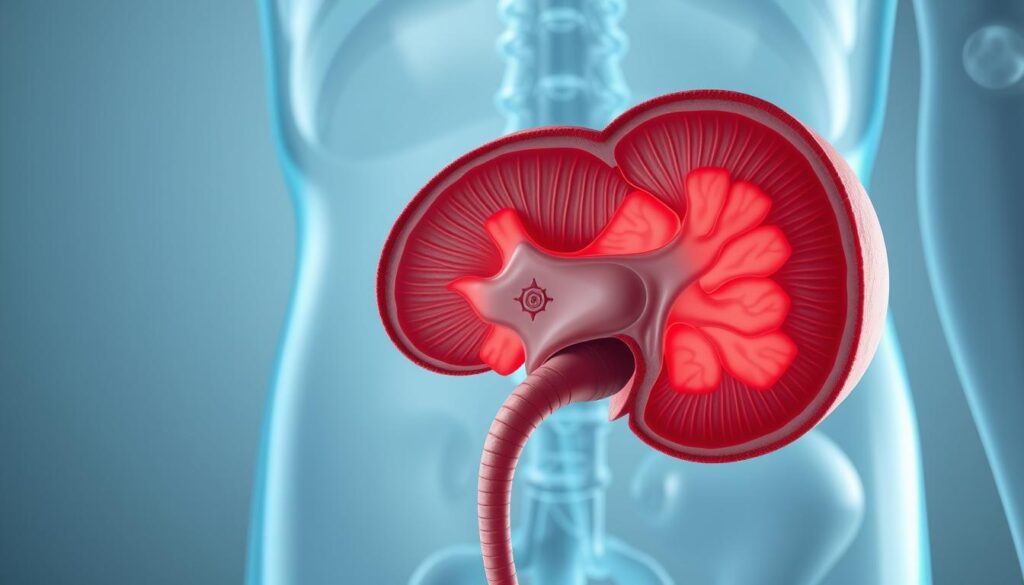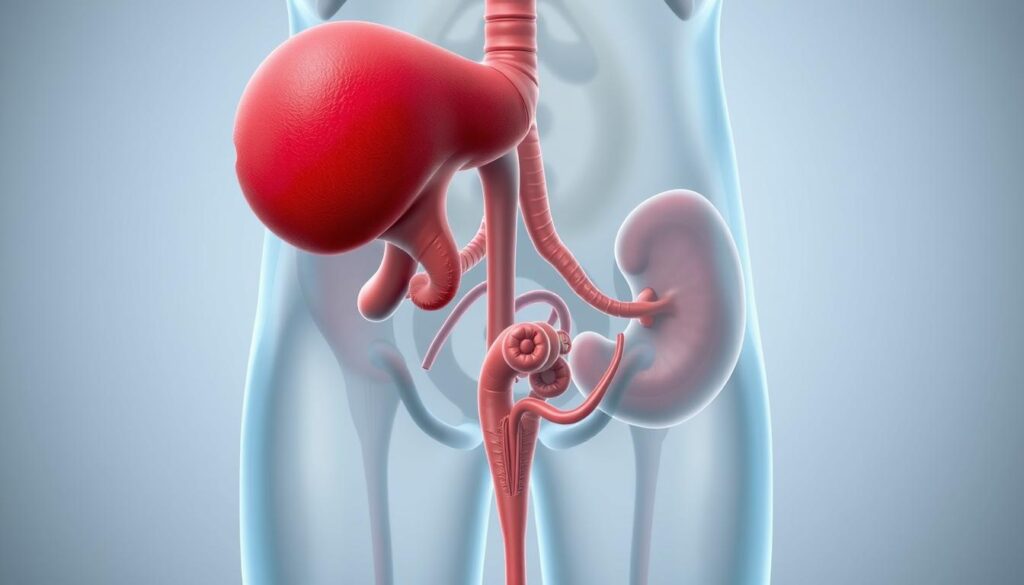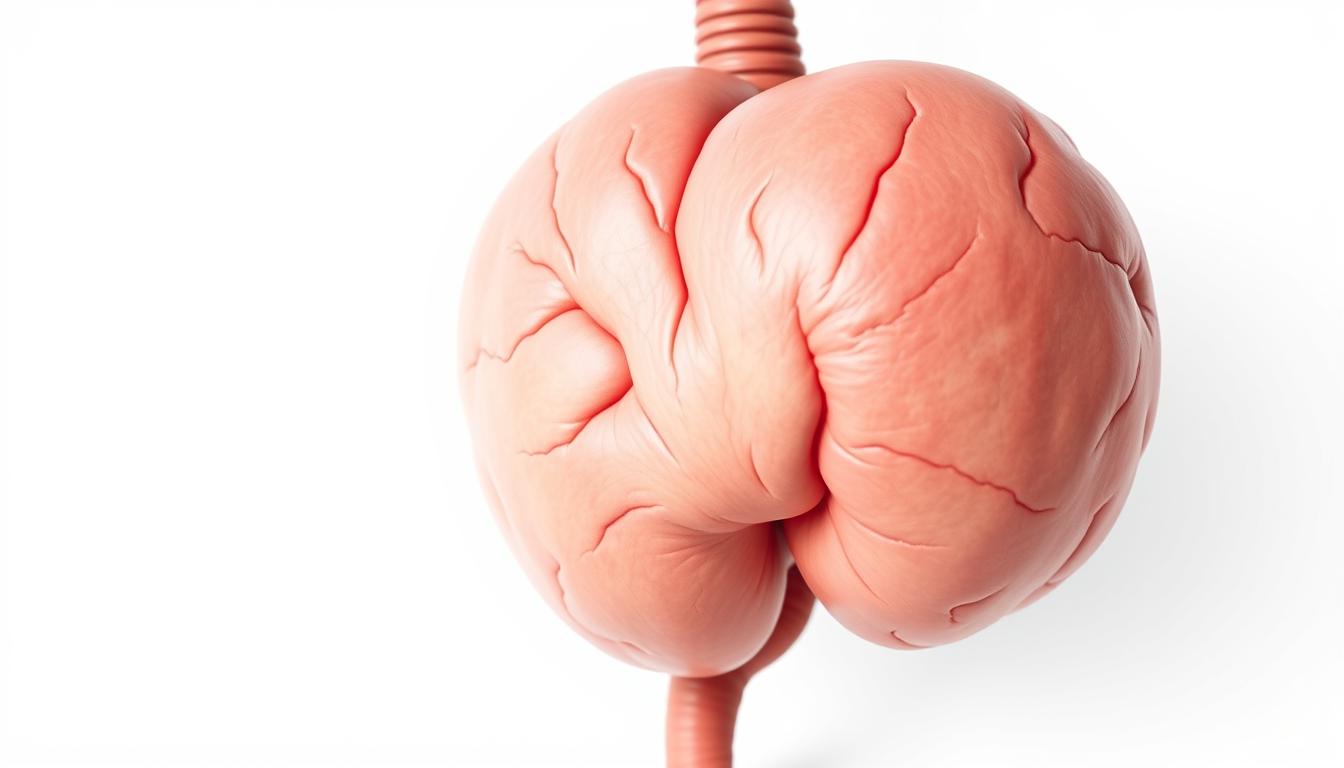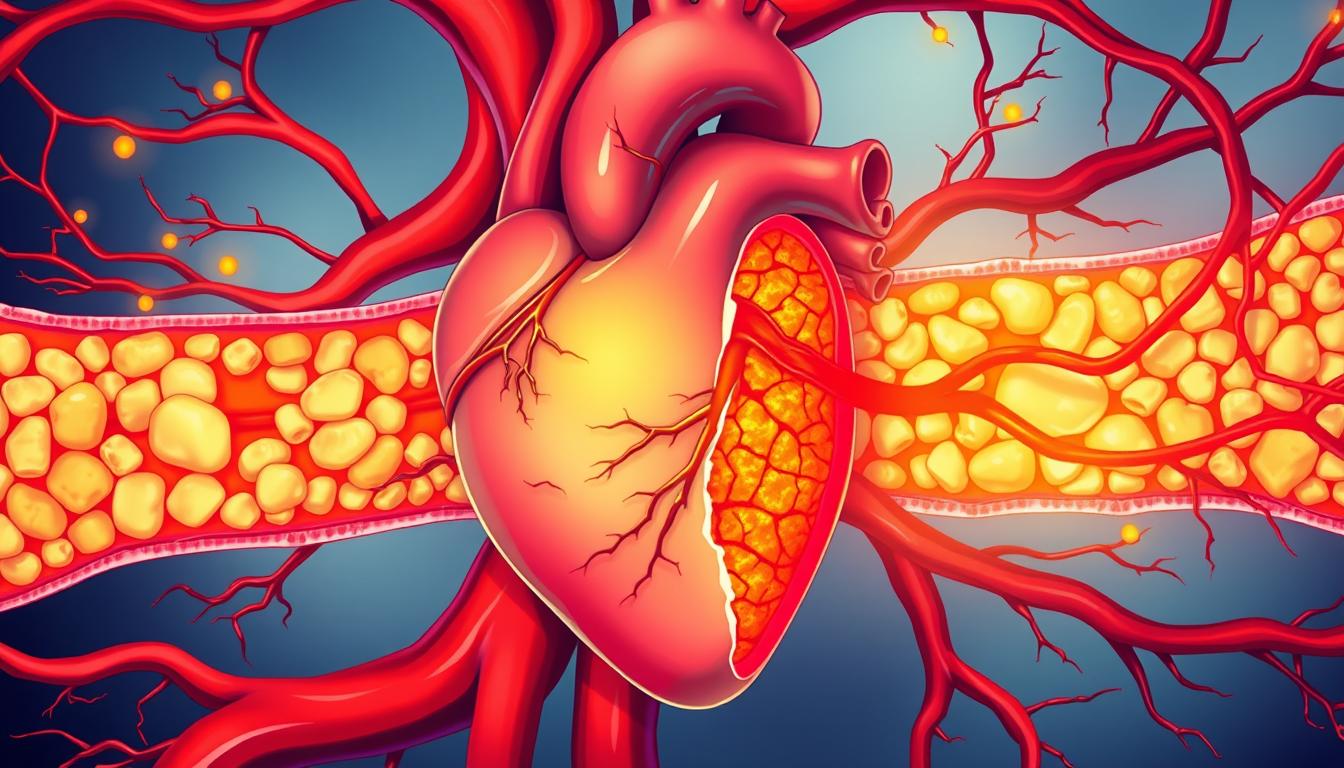Did you know that over 50% of men over 60 experience an enlarged prostate? This condition, known as benign prostatic hyperplasia (BPH), affects nearly 90% of men by the age of 80. Yet, many brush off the early signs, unaware of the potential risks.
An untreated enlarged prostate can lead to serious complications like bladder infections, stones, or even kidney failure. Dr. Gonzalez warns that ignoring these symptoms can significantly impact your quality of life. Frequent trips to the bathroom, a weak urine stream, or difficulty starting urination are not just minor inconveniences—they’re red flags.
Early detection is crucial. From lifestyle adjustments to surgical options, there’s a wide spectrum of treatments available. Understanding the symptoms and seeking timely medical advice can make all the difference.
Key Takeaways
- Over 50% of men over 60 experience an enlarged prostate.
- Untreated BPH can lead to bladder infections, stones, or kidney failure.
- Common symptoms include frequent urination and a weak urine stream.
- Early detection can prevent serious complications.
- Treatment options range from lifestyle changes to surgery.
Understanding the Prostate and Its Role in Your Health
The prostate, a walnut-sized gland, is crucial for controlling urine flow. Located just below the bladder, it surrounds the urethra, the tube that carries urine out of the body. This small but mighty organ plays a dual role in your health.

What is the Prostate?
This gland is about the size of a walnut and sits at the base of the bladder. It produces fluid that nourishes and transports sperm, making it essential for reproductive function. At the same time, it helps regulate the flow of urine by tightening or relaxing around the urethra.
Why Prostate Health Matters
When the prostate grows larger, a condition called benign prostatic hyperplasia (BPH), it can press against the urethra and block urine flow. This can lead to discomfort and complications like bladder infections or kidney damage. Unlike cancer, BPH is non-cancerous but still requires attention.
Ignoring prostate health can have long-term consequences. Early awareness and care can prevent serious issues and improve your quality of life.
How to Know If Your Prostate Is Getting Too Big
Recognizing the signs of an enlarged prostate early can prevent serious health issues. Many men experience symptoms that develop gradually, often worsening with age. These signs are easy to dismiss but can indicate benign prostatic hyperplasia (BPH), a common condition that requires attention.

Common Symptoms of an Enlarged Prostate
The symptoms of an enlarged prostate primarily affect urination. Here are the most common ones:
- Frequency: Needing to urinate more often, especially at night.
- Urgency: A sudden, strong need to urinate that’s hard to delay.
- Nocturia: Waking up multiple times during the night to urinate.
- Dribbling: A weak or interrupted flow of urine.
- Hesitancy: Difficulty starting urination.
- Intermittency: Stopping and starting during urination.
- Incomplete emptying: Feeling like your bladder isn’t fully empty after urinating.
These symptoms often start mild but can progress over time. Ignoring them, especially incomplete emptying, can lead to complications like bladder stones or infections.
When to Seek Medical Advice
If you notice any of these symptoms, it’s important to consult a doctor. Seek immediate medical attention if you experience:
- Blood in your urine.
- Complete inability to urinate.
- Severe pain during urination.
Dr. Gonzalez warns, “Ignoring incomplete emptying can lead to bladder damage and other serious issues.” Early evaluation helps rule out conditions like prostate cancer and ensures timely treatment.
Causes of an Enlarged Prostate
Understanding the underlying factors of prostate enlargement can help you take proactive steps. While age is the most common contributor, other elements like lifestyle and family history also play significant roles. Knowing these causes can empower you to make informed decisions about your health.
Age and Hormonal Changes
As men age, hormonal shifts often lead to prostate enlargement. Starting around 40-50, androgen levels fluctuate, causing the gland to grow. Dr. Gonzalez explains, “This hormonal imbalance is a primary driver of risk for developing BPH.” By understanding this natural process, you can better monitor your health.
Lifestyle and Dietary Factors
Your diet and daily habits significantly impact prostate health. Studies from Houston Methodist show that diets high in red meat and dairy increase risk developing BPH. Conversely, a Mediterranean diet rich in vegetables, fish, and healthy fats can reduce this risk. Processed foods and high cholesterol levels are also linked to prostate enlargement.
Family History and Genetic Predisposition
If your father or brother has experienced prostate issues, your risk developing BPH is higher. NHS statistics reveal that men with a family history of prostate conditions are twice as likely to face similar challenges. Genetic factors, like familial hypercholesterolemia, further compound this risk.
Diagnosing an Enlarged Prostate
Accurate diagnosis is the first step toward managing prostate enlargement effectively. A thorough evaluation helps identify the condition and its severity, guiding the right treatment plan. Your doctor will use a combination of methods to assess your symptoms and determine the best course of action.
Medical History and Physical Examination
Your doctor will start by asking detailed questions about your symptoms. This includes frequency, urgency, and any discomfort during urination. A physical exam, often involving a rectal exam, helps assess the size prostate and check for abnormalities.
In some cases, you may be asked to keep a 3-day voiding diary. This records how often you urinate and the volume each time. It provides valuable insights into your urinary habits and helps your doctor make an informed diagnosis.
PSA Test and Other Diagnostic Tools
The PSA test measures the level of prostate-specific antigen in your blood. While elevated levels can indicate prostate issues, they are not definitive. Factors like age and condition can influence results, so interpretation requires expertise.
Advanced diagnostic tools like ultrasound, cystoscopy, and urine flow tests may also be used. These methods provide a clearer picture of the prostate’s structure and function. If needed, your doctor may refer you to a urologist for further evaluation.
Early and accurate diagnosis ensures timely intervention, reducing the risk of complications. Understanding the process can help you feel more prepared and confident in managing your health.
Treatment Options for an Enlarged Prostate
Managing an enlarged prostate effectively requires understanding the available treatment options. From medications to surgical procedures, each approach aims to alleviate symptoms and improve quality of life. Early intervention can prevent complications like bladder infections or kidney damage.
Medications to Manage Symptoms
Medications are often the first line of treatment for benign prostatic hyperplasia (BPH). They help relax the prostate muscles or shrink the gland, easing urinary symptoms. Here’s a comparison of common medications:
| Medication Type | Brand Examples | How It Works |
|---|---|---|
| Alpha Blockers | Flomax, Uroxatral | Relaxes prostate and bladder neck muscles |
| 5-Alpha Reductase Inhibitors | Proscar, Avodart | Shrinks the prostate over time |
Minimally Invasive Procedures
For those seeking alternatives to medications, minimally invasive procedures offer effective solutions. These treatments, known as MIST, include:
- UroLift: Lifts the prostate to relieve pressure on the urethra. Recovery time is typically 1-2 days.
- Rezūm: Uses steam to shrink prostate tissue. Most patients resume normal activities within a week.
- Aquablation: Removes excess tissue using water jets. Recovery is quick, with minimal discomfort.
Surgical Interventions
When symptoms are severe, surgery may be the best option. The gold standard is transurethral resection of the prostate (TURP). This procedure removes excess tissue to improve urine flow. Recovery usually takes 4-6 weeks, with potential complications like bleeding or infection.
For older patients, minimally invasive options are often preferred due to shorter recovery times. Always discuss risks and benefits with your doctor to choose the right approach.
Lifestyle Changes to Support Prostate Health
Small adjustments in your daily routine can significantly improve prostate health. Simple changes in diet, exercise, and habits can reduce risk factors and enhance your overall well-being. Here’s how you can take proactive steps to support your urinary tract and maintain a healthy bladder.
Dietary Adjustments
Your diet plays a crucial role in prostate health. Swap red meat for fish, which is rich in omega-3 fatty acids. Replace dairy with plant-based alternatives like almond or oat milk. Incorporate more vegetables, whole grains, and healthy fats, as recommended in the Mediterranean diet.
Hydration is key, but avoid excessive caffeine and carbonated drinks. These can irritate the bladder and worsen symptoms. Opt for water or herbal teas to maintain a healthy urinary tract.
Exercise and Weight Management
Regular physical activity can improve flow and reduce risk factors. Aim for at least 30 minutes of moderate exercise, like walking or swimming, five times a week. Maintaining a healthy BMI can also alleviate pressure on the bladder and improve symptoms.
Strength training, particularly for the pelvic floor, can enhance muscle control. This helps ensure you empty your bladder completely, reducing the chance of complications.
Reducing Bladder Irritants
Certain foods and drinks can irritate the bladder and worsen symptoms. Limit spicy foods, alcohol, and acidic beverages like citrus juices. If you’re a coffee lover, try switching to decaf or herbal alternatives.
Practice bladder training techniques, such as double voiding. This involves waiting a few moments after urinating to ensure the bladder is fully empty. These small changes can make a big difference in your daily comfort.
Preventing Complications from an Enlarged Prostate
Taking proactive steps can help you avoid serious issues linked to an enlarged gland. Early action and consistent care are key to maintaining your quality of life. By staying informed and vigilant, you can reduce the risk of complications like infections or stones.
Monitoring Symptoms Over Time
Keeping track of changes in your body is essential. Create a checklist to log monitoring symptoms like frequency, urgency, or discomfort during urination. This helps you notice patterns and share accurate details with your doctor.
Watch for warning signs such as blood in your urine or severe pain. These could indicate a more serious condition like a urinary tract infection or even cancer. Early detection through monitoring symptoms can make a significant difference.
Regular Check-Ups and Screenings
Routine visits to your healthcare provider are crucial. The NHS recommends a 3-year review schedule for men over 50. For those with a family history, regular check-ups should start earlier.
Screenings like the PSA test can provide valuable insights. Houston Methodist suggests annual testing for men at higher risk. Discuss your screening frequency with your doctor based on your age and health history.
During visits, bring up any concerns or changes in your symptoms. Use these conversation starters to ensure you cover all bases:
- “Should I adjust my diet or exercise routine?”
- “Are there any new treatments I should consider?”
- “How can I better manage my cholesterol levels?”
Ongoing cholesterol management is vital, as high levels can worsen your condition. A healthy lifestyle, combined with regular check-ups, can help you stay on top of your health.
Conclusion
Taking charge of your prostate health starts with awareness and action. Recognizing early symptoms like frequent urination or a weak stream can help you seek timely care. Early detection of benign prostatic hyperplasia or an enlarged prostate can prevent complications like bladder infections or kidney damage.
Proactive steps, such as regular check-ups and lifestyle adjustments, play a vital role. From dietary changes to treatment options like medications or surgery, there’s a wide spectrum of solutions tailored to your needs. Engaging with your healthcare provider ensures you stay informed and in control.
Remember, this condition is manageable. With the right approach, you can maintain your quality of life and enjoy better health. Stay vigilant, take action, and prioritize your well-being.













